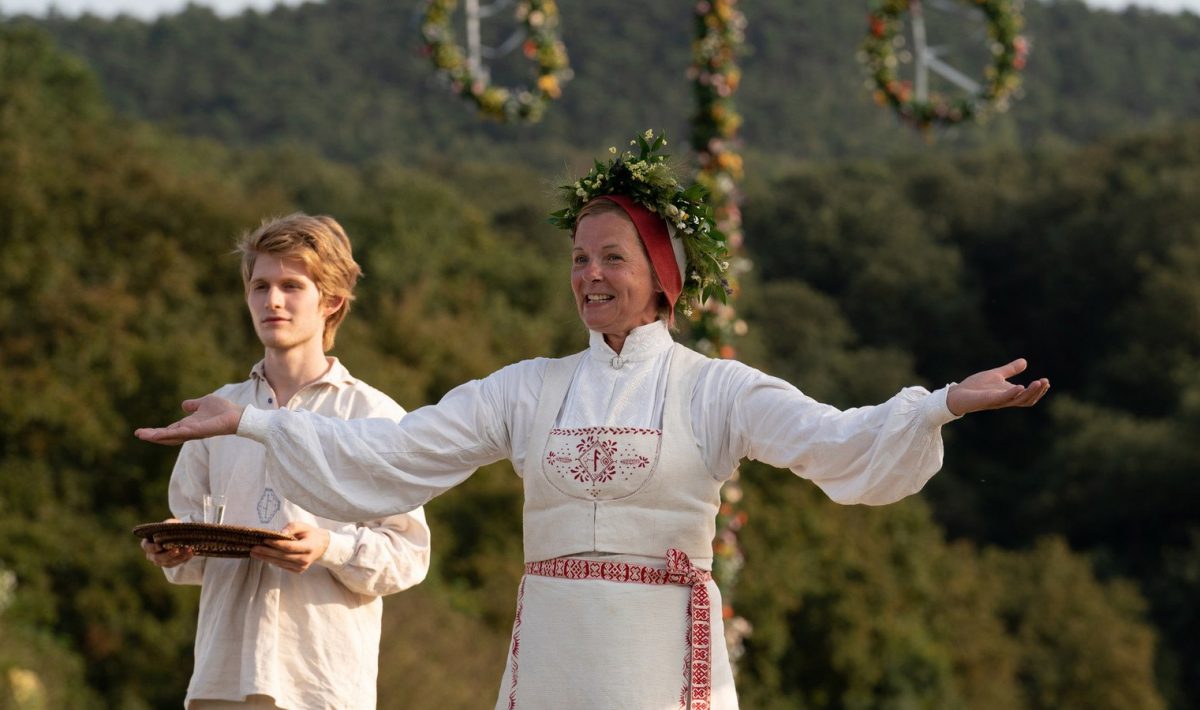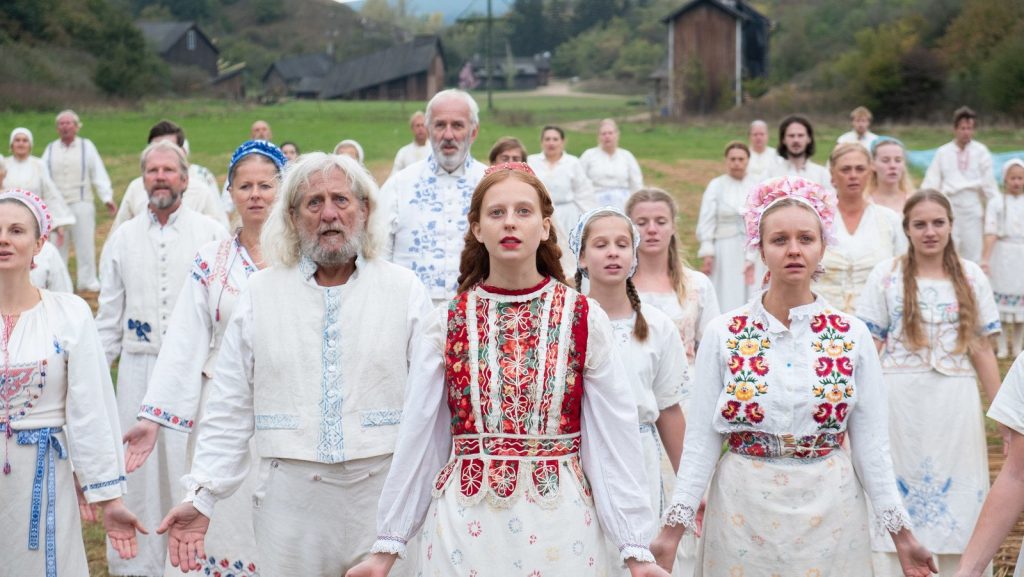Many words have already been said about Midsommar, the latest film by one of the leading creators of A24 stable, Ari Aster. You can focus on the analysis proposed by the creator himself, that is – as Aster puts it – “apocalyptic breakup movie”, a parabola of toxic relationships, or a grotesque film that is entering the foreground and a surprisingly apt trip towards cultural anthropology. The film is full of liminal rites – the eponymous summer solstice, initiation, life cycle divided into four parts related to the seasons (spring-childhood, summer-youth, autumn-working age, winter-old age). The rituals of passage have been colorfully shown and are undoubtedly an excellent introduction to anthropology.
One cannot argue that Midsommar is of course all of this, but one cannot watch this movie without comparison to Robin Hardy’s Wicker Man (1973) starring Edward Woodward and Christopher Lee.
Although the director tries hard to convince us that he breaks with this pattern from the moment he thought about it, one cannot shake the impression that the two films are extremely similar to each other. “I tried to avoid it as much as I could. I think what the movie tries to do is point to The Wicker Man and set up expectations native to that film, then take a left-turn from there and go somewhere surprising”, says Aster. Has the creator fully succeeded?
As usual, the most accurate answer will be the “middlelandism” loved so much in Poland. Yes and no. In the end, we will say, the rituals of passage in different cultures look similar, so there is no reason to argue for using similar visual identification. You can forgive comparable pageantry – after all, big fires always look good. How nice to think of this film as an image of American naivety and ignorance while generally lusting old continental culture. It is also impossible to divest Aster’s work of humor, charm and technically solid workmanship.
The clash of cultures will therefore be clearer for the American director, and the resulting grotesque will reach a level similar to The Wicker Man. Midsommar is one of the movies that I like to repeat they could do better in Technicolor. Imagine a fictional village, Hårga, in pastel colors. The mysterious triangular yellow temple cuts with its color into the gently blue sky immediately evoking associations with Jodorowsky’s cinema. Ah, what a dream! (Oh, no! Did I miss the stale tales? After all, The Wicker Man was shot in Technicolor)! Still, my reception of this film is warm and I think it falls really well in the entertainment category.
Someone said, and I fully agree, that Midsommar is the perfect date movie, and at the same time an excellent test for the degree of toxicity of one’s relationship. There is nothing like distance to each other and joint exploration of ironic, black humor.
If we were to define Midsommar genre, the movie would probably be placed between the melodrama and a full-blooded fairy tale. Seekers of classic horror movies will not find much for themselves – as a matter of fact, they should already get used to that the A24 productions are a little more thought-out and rather discussing with known patterns than corresponding with them. In turn, those who after the screening of Aster’s film will miss the iconic Scandinavian gloomy grayness (grayness, not broad daylight) and desire a climate built on mythology, can always return to David Bruckner’s The Ritual (2017) hanging on Netflix – which can now be watched as negative of Aster’s film.







